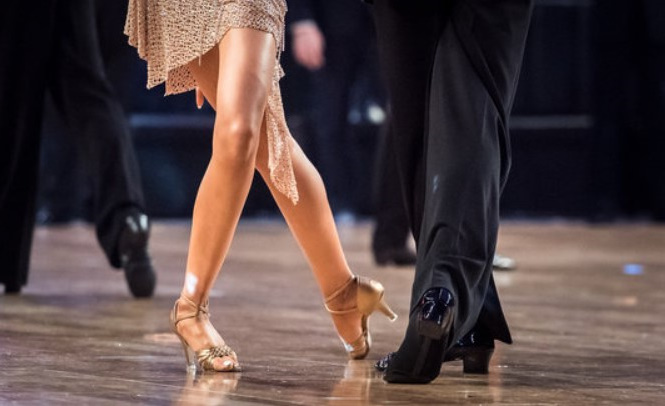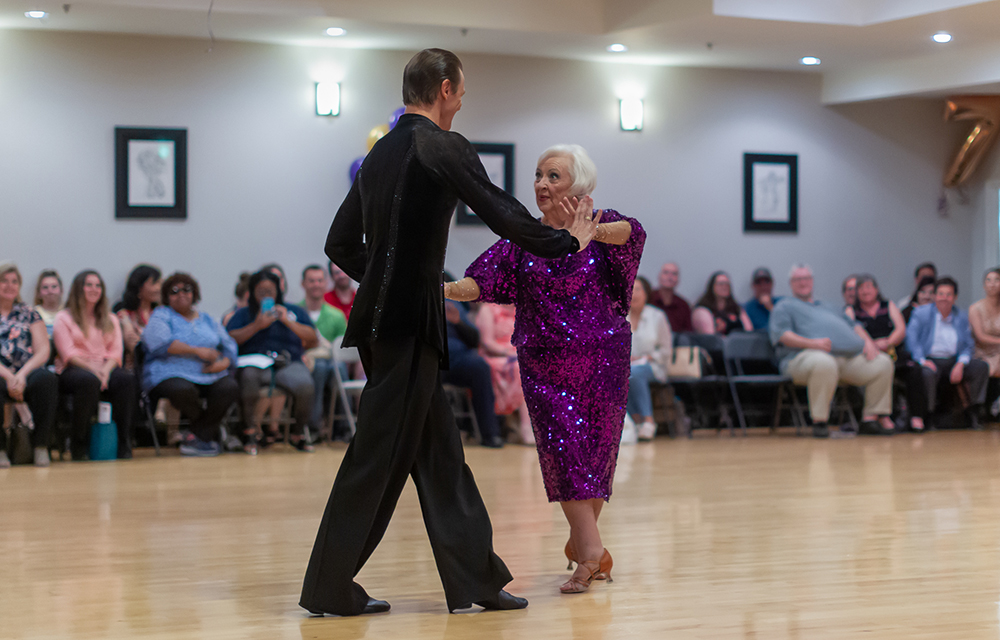Compare and Contrast Latin Dances With Ballroom Dances
The ballroom dancing style is quite famous around the world. Some people assume it’s a vintage dance style, and it is very difficult to get into complete attire and perform it. However, some people have an opinion about ballroom dancing as competitive dancing performed by athletic people only. However, at Dance Studios Dubai, we have explained numerous times that ballroom and Latin dancing can be done by anyone.
When you ask people the difference between ballroom dancing and Latin dancing, they say it is the same thing with two different names. And when you ask them why there are two names for the same dancing style, they get clueless. Dance Studios Dubai is one of the oldest dance studios that offers ballroom dance lessons in Dubai. In this blog article, we will see in detail the difference between ballroom and Latin dancing.
Also, read our blog titled “Different Styles of Salsa Dance”. The detailed blog will give you information about different salsa styles, and you can pick one that is perfect for you.
Difference Between Ballroom Dance and Latin Dance
Ballroom dances are classified into two types: standard dances, also known as smooth dances, and Latin dances, also known as rhythm dances. The Latin American dances include the Rumba, Cha Cha Cha, Samba, Jive, Swing Dance, and Pasodoble, while the modern standard dances include the Waltz, Foxtrot, Tango, Quickstep, and Viennese Waltz. We will see in detail the difference between the two further in this article.
Also, read our guide on “How to Choose the Right Dance Studio in Dubai”.
The Frame is Different
In standard ballroom dances, a closed frame is mostly used. Where lovers or dance partners face one another while the woman rests her left arm on the man’s right shoulder. The man grips the lady’s right shoulder blade with his left hand while placing his right hand on her left shoulder blade. In standard ballroom dances, also known as conventional dances, this posture is always held.
Whereas, in Latin dancing, depending on the needs of the dance, the dancers in Latin dances switch between a variety of holds. They may have a single handhold, a double handhold, an open hold, or a closed hold. The frame and hold are one major difference between ballroom dancing and Latin dancing. You can further learn about these two dances by joining the reputable and best dance studios in Dubai.
If you have been dancing for too long and have reached a dance plateau, then read our detailed guide on overcoming the dance plateau in Bachata dancing.
Movements are Different
The fluid movements of Latin music are combined with exquisite body shapes and stances to create choreography in the energetic, fervent form of Latin dancing. Latin dancing requires a combination of Cuban motion with the hips, knee shifting, and upper body isolation. Latin dances are more athletic due to their combination of movements. That is why, generally, Latin dances are recommended for people who are athletic and fit.
In standard ballroom dancing, your body must move in contra-body movement (CBM). CBM is nothing but your foot gliding in motion while tuning your movements to the opposite of the rest of your body posture. In standard ballroom dancing, while engaging in contra-body movement, you end up turning your body (shoulders and hips) in the opposite direction to the movement of the legs. For example, stepping forward with the right foot while shifting the hip and shoulder to the left, or vice versa, standard ballroom dancing has much gentler movements, and that is why people of all ages can start learning this dance style by joining ballroom dance classes in Dubai.
Also, read our blog titled “Explore the Influence of Other Dancing Styles on Bachata”.
Music and Timing
Latin dances use very different styles of timing and music when compared to standard ballroom dances. When you join one of the best dance classes in Dubai, you will understand the difference between the two more clearly. The pace of standard dancing is slow and graceful, with the two dance partners gliding across the room in sync with the music. Whereas Latin dances generally go more quickly and are cheerful and enjoyable. In Latin dancing, dancers rarely make their way around a room, and rather, most partners dance in one place or move around in a very small space. This fact can be traced back to the origin of Latin dances. Most of the Latin dances originated in South America, where they went through several banns from society and the ruling government.
Also, read 6 Common Myths About Dance Lessons in our blog section.
Costumes and Attires
In standard ballroom dancing, dancers often wear elegant and formal attire, including suits and ball gowns. The attire is usually more traditional and conservative. Women do not show a lot of skin and wear full lengths; similarly, men wear tuxedos and three-piece suits. In Latin dance, costumes are typically more colorful, and revealing, and designed to enhance the movement and flair of the dances. Sequins, fringes, and vibrant colors are commonly seen in Latin dance attire. In competition, you can see various styles of attire adorned by both females and males. Generally, leotards are worn during the practice of Latin dances. If you are unsure of what to wear to your dance competition, you can take professional dance lessons in Dubai from reputable dance studios to learn what to wear and what not to wear to a competition.
Steps and Techniques
The steps and techniques used in Latin dance differ a lot from those used in standard ballroom dancing. The style of dancing is pretty different, i.e., in standard ballroom dancing there are slow-paced movements and contra movements a lot, while in Latin dancing the movements are pretty fast-paced and no contra is involved. You can join ballroom dance classes in Dubai to learn both movements properly. When you get the hang of both dancing styles, you will love performing them both, as they’re both a lot of fun!

















